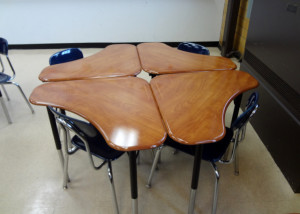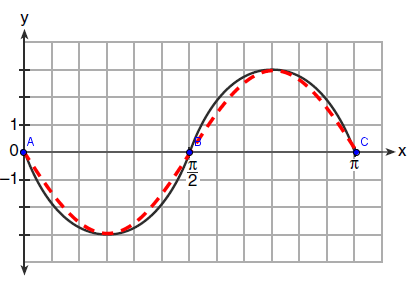I have taught in a variety of physical settings, from old-school classrooms with desks bolted to the floor to modern environments that synthesize collaborative space with individual work stations. In these various spaces I’ve successfully integrated all kinds of technology into teaching and learning: smartboards, projectors, clickers, laptops, sensors, calculators, and the like.
As far as I’m concerned, sometimes all a class needs is one good problem written on the board, but overall I consider myself to be a technology-positive teacher. I like to try to new things and I do my best to use what’s available.
But without question, this is the single most valuable piece of instructional technology I’ve encountered.
I started teaching in a classroom full of these desks several years ago, and I’d hate to have to teach without them. They are light, easy to move around, and extremely flexible when it comes to grouping.
It’s so easy to transition from pairs to fours
that students do it without prompting. When the situation calls for more collaboration, they simply rearrange themselves. If they want to merge into another group, they do it.
I love the wealth of tools that are available to math teachers now–Geogebra, Desmos, Wolfram Alpha, Sage, and others–but if I had to choose just one thing to have in my classroom, these desks would be it.






